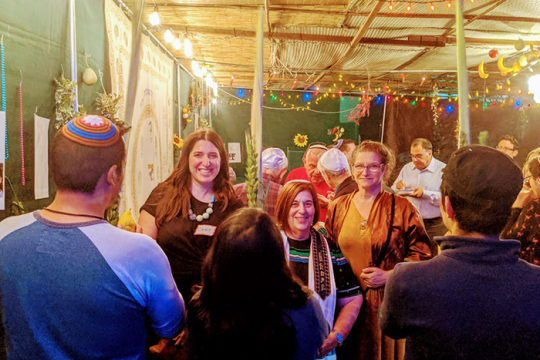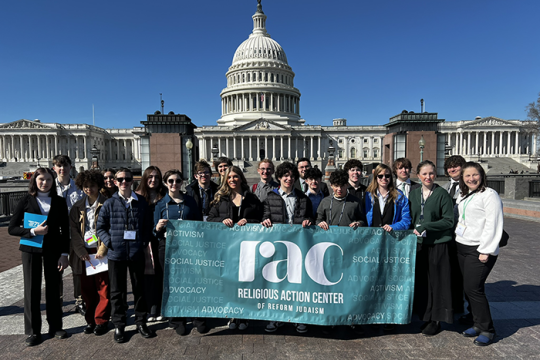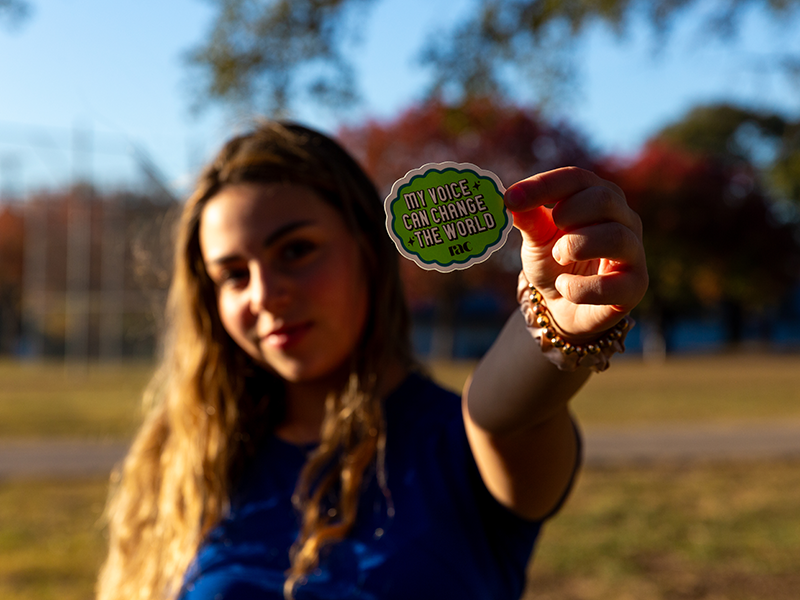This post is adapted from Congregation Beth Am's monthly newsletter.
Can you be a good Jew without caring about social justice? Most of us would see that as a contradiction in terms. The 2013 Pew study found that 56% of American Jews called “working for justice and equality” essential to their Jewish identity.
Reform Jews especially emphasize tikkun olam (repairing/healing the world); many regard it as their primary Jewish practice. We’ve been criticized for this focus, especially in the Orthodox world. In one blistering attack, entitled “The Fallacy, Delusion and Myth of Tikkun Olam,” Rabbi Y.A. Korff wrote:
“It is not at all a centuries-old tradition… and it is not a commandment. And to be clear, Tikkun Olam does not even mean repairing the world in the sense of social justice….We cannot, and are not instructed to, save the world, or even to repair it. Judaism teaches no such thing. Rather, we are instructed to conduct ourselves properly, to observe the Mitzvos, the Commandments … and in that way to contribute to society and civilization….”
Rabbi Korff is right about one thing: Reform Judaism transformed the original meaning of tikkun olam. While the Bible has much to say about justice, kindness and bringing goodness into the world, it does not mention tikkun olam. The term first appears in the Mishna, the Jewish law code edited about 200 C.E. There we learn that the Sages instituted a number of changes “mipnei tikkun ha-olam – for the sake of tikkun ha-olam.” In context, this seems to mean “for the sake of maintaining the social order.” The Sages used this phrase to justify a series of relatively modest legislative tweaks, correcting flaws that would otherwise threaten the stability of the legal system as a whole.
“Preserving the current social order might sound like a politically conservative move. It is worth noting, however, that the majority of these rabbinic cases involve the protection of a person or set of people who typically found themselves toward the bottom of the social order. …”
This is stage one in the strange history of tikkun olam – a series of modest technical adjustments in rabbinic law, in which one might be able to detect a somewhat progressive slant. Stage two is found in a familiar prayer – the Aleinu, chanted towards the end of every Jewish worship service. In the second paragraph, we find this:
"Therefore we hope in You, Adonai our God, soon to see the glory of Your might, sweeping idolatry away so that false gods will be utterly destroyed, to repair the world under the sovereignty of the Almighty [l’takkein olam b’malchut Shaddai] so that all human beings will call upon Your name, bringing all the wicked of the earth back to You..."
Aleinu looks toward a future in which there will be universal recognition of God; monotheism will encompass all the earth. It is the act of fixing/repairing/perfecting the world that will accomplish the goal asserted at the end of the prayer, in the words of the prophet Zechariah: “On that day Adonai will be One and God’s name one.”
Note two things. First, the “fixing” of the world described in this prayer will be accomplished not by us, but by God. Aleinu is not a summons to human action – it’s a plea for God to act. Second, the “repair of the world” described here bears little relationship to our contemporary social justice agenda. The prayer doesn’t talk about eliminating poverty, bigotry, illness or war. We might imagine that those evils would not be present in a world in which the divine Presence was manifest to all people, but the prayer does not say that explicitly.
The third stage in the evolution of tikkun olam comes from the work of the 16th century Kabbalist Isaac Luria. Luria taught his followers that fragments and sparks of the divine light were buried in even the darkest corners of the universe, and that when Jews perform the divinely-given commandments, they can lift up the sparks, restore them to their Source, and literally help to repair the broken world. But in Lurianic kabbalah, the task of “rescuing sparks of light” was not to be accomplished by what we’d call the ethical mitzvot, such as feeding the hungry or caring for the sick. Instead the emphasis was on study, prayer and ritual.
The idea of “repairing the world” in the way we now understand it – a broad mandate to engage in acts of service and social justice – was born very recently, just within the past 50 years or so. It seems to be an example of pouring new wine into an old vessel – what we now call “repurposing” a term from antiquity and imbuing it with a dramatically different significance.
In my view, this is something to celebrate. Before modernity, the Jewish world was narrow and circumscribed; Jewish notions of doing good were necessarily modest, focused inward, on one’s immediate family and community, content with improving one’s own small corner of the world. Tikkun olam as the Reform movement re-conceived it was bold and ambitious, outward-directed, forward-looking, focused for the most part on societal concerns rather than specifically Jewish ones. It rested on the optimistic notion that Jews could participate fully in the broader culture, joining with like-minded others of all races, religions and cultures to heal the world.
Today tikkun olam in its modern sense has been adopted by members of all streams of Judaism. So, for instance, Rabbi Jonathan Sacks, exemplar of mainstream Orthodoxy, offers these impassioned words in To Heal a Fractured World:
“There may be poverty in every age, but that does not make it God’s will for the world. There may be injustice, but we may not be silent in the face of it… Tikkun olam involves the recognition that the world does need repair, rather than Stoic acceptance or ascetic denial… As long as there is hunger, poverty and treatable disease in the world, there is work for us to do. As long as nations fight, and men hate, and corruption stalks the corridors of power; as long as there is unemployment and homelessness, depression and despair, our task is not yet done...”
Rabbi Janet Marder is the senior rabbi at Congregation Beth Am in Los Altos Hills, California. In 1983, she became the first ordained rabbi of Beth Chayim Chadashim, a Los Angeles synagogue with special outreach to lesbian and gay Jews. During her five years with that congregation, she founded NECHAMA, a Federation-funded program of AIDS education for the Jewish community. From 1988 to 1999, Rabbi Marder served the Union of American Hebrew Congregations (now the URJ), providing leadership and guidance to Reform synagogues in Southern California, Arizona, New Mexico, Nevada and Texas. In April 2003 Rabbi Marder was elected the first woman president of the Central Conference of American Rabbis.
Related Posts

Building a Sukkah That Stands for Justice

Justice Within Reach

